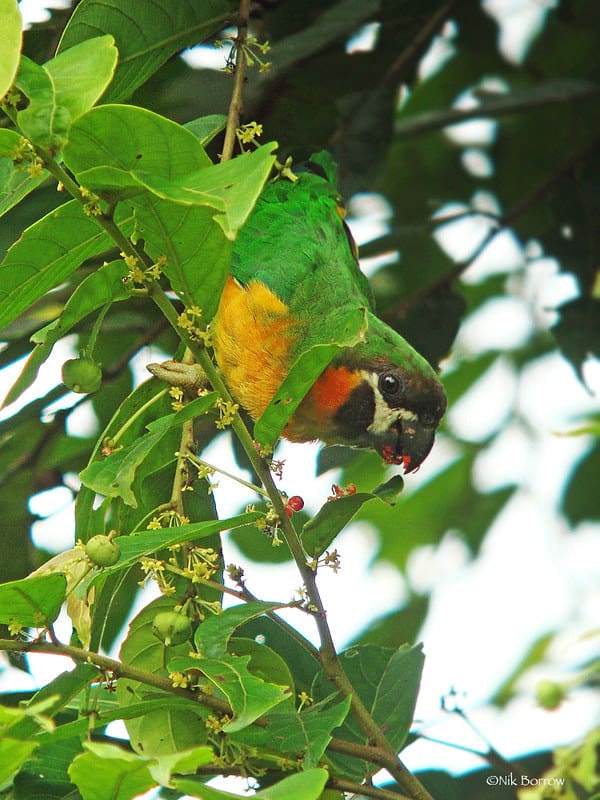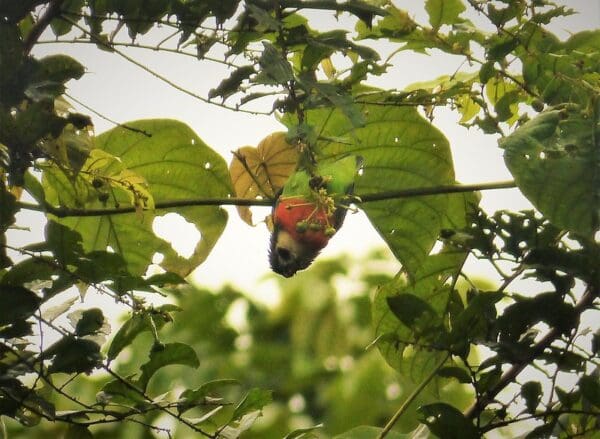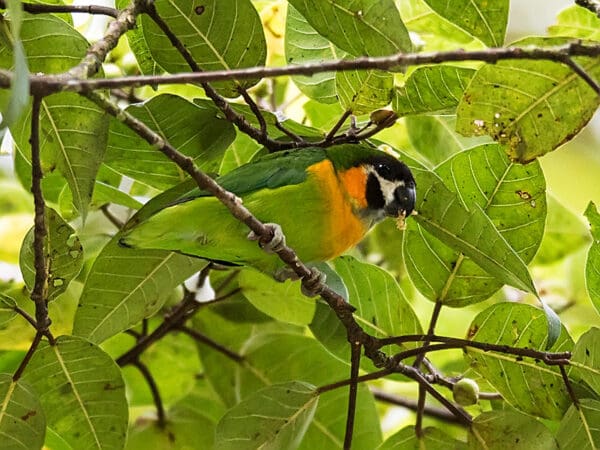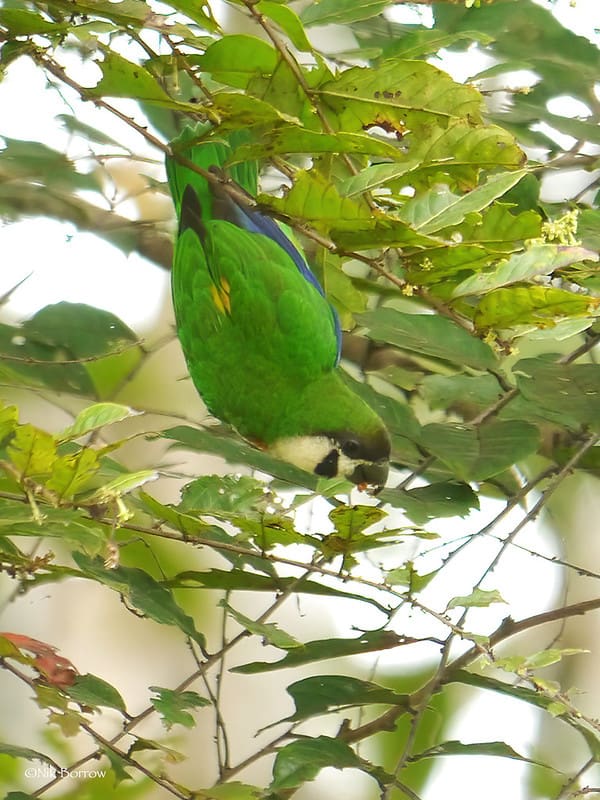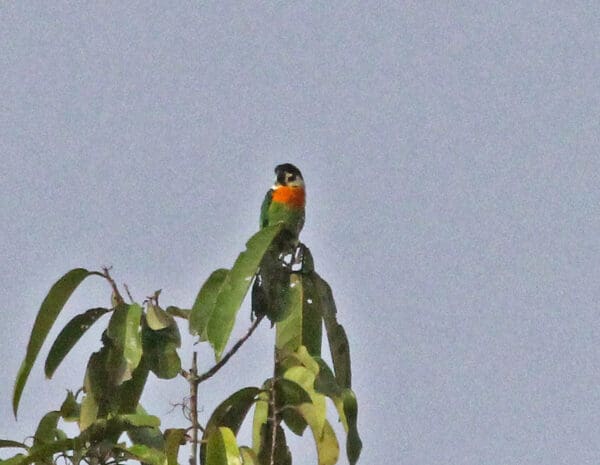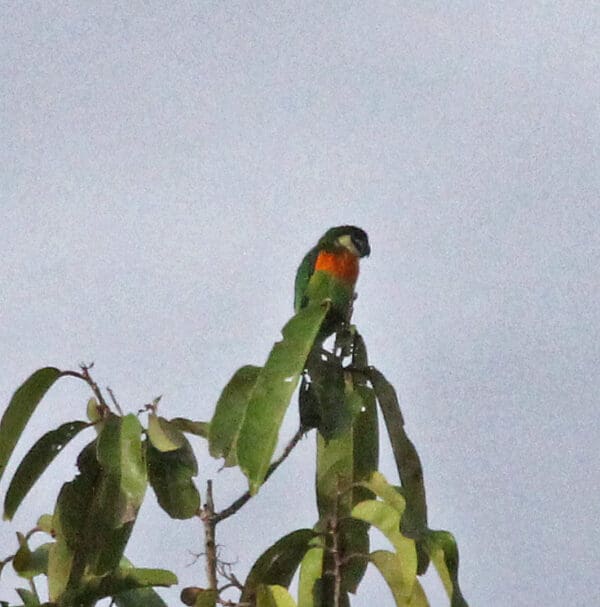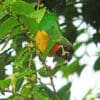
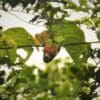
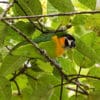
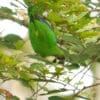
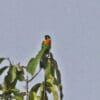
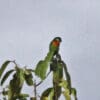
DID YOU KNOW?

Cyclopsitta

melanogenia
Size:
13 cm (5.1 in)
Weight:
28-35 g (1-1.2 oz)
Subspecies including nominate:
three: C. m. melanogenia, C. m. suavissima, C. m. fuscifrons
Colour Adult:
C. m. melanogenia: Both adults as in fuscifrons, but female has paler, more green breast.
C. m. fuscifrons: Male-as in suavissima, but back area of cheeks and forehead to behind eyes brown/black. Female-as in suavissima but back of cheeks and forehead to behind eyes brown/black.
C. m. suavissima: Male-dark blue forehead and forecrown to area behind eyes; lores, front of cheeks and line beneath eye buff/white, rest of cheeks black; pale yellow ear coverts to throat; orange breast and upper abdomen; smaller in size. Female-as in male but back part of cheeks dusty black washed with blue; orange ear coverts; throat and breast dull green/yellow.
Colour Juvenile:
C. m. melanogenia: As in adults.
C. m. fuscifrons: As in adult female.
C. m. suavissima: As in adult female but duller head markings.
Call:
Calls in flight shrill and penetrating notes repeated at short pauses. Some sounds sharp. Also subdued chattering while feeding.
Xeno-canto Wildlife Sounds – Dusky-cheeked Fig Parrot (C.m. fuscifrons)
More Information:
Content Sources:
BirdLife International
Cornell Lab of Ornithology/Birds of the World
Captive Status:
Rare
Longevity:
—
Housing:
Walk-in enclosure, minimum length 2.1 m (7 ft). Planted if possible.
Diet:
Dried soaked figs (soak in water a few hours), two or more per bird per day; once daily, a drop of Konakion (Roche) or other vitamin K additive; fruit such as: apple, pear, orange, banana, pomegranate, forming at least 50 percent of diet; soaked sultanas; berries such as: elder, mountain ash, pyracantha; spray millet; small seed mixture such as: canary, oats safflower, limited sunflower; cooked beans and pulses; rearing food: hard-boiled egg, wholegrain bread and carrot, all ground to crumbly consistency. Complete pellet, if taken. Breeding diet: some pairs consume mealworms mainly for first 3 weeks of chicks’ lives, also well-cleaned maggots or proprietary insectivorous food. Withhold seed for first 3 weeks of chicks’ lives.
Enrichment:
Provide planted aviary. Also provide lots of bird-safe branches and browse for the parrots to chew on. Bathing areas are enjoyed.
Nest Box Size:
Nest log 4″ (10.1 cm) wide x 10″ (25.4 cm) high.
Clutch Size:
Probably 2.
Fledging Age:
Likely 5.5-7.5 weeks.
Hatch Weight:
—
Peak Weight:
—
Weaning Weight:
—
World Population:
Unknown, decreasing.
IUCN Red List Status:
Least Concern
CITES Listing:
Appendix II
Threat Summary:
This species is considered to have a medium dependency on forest habitat, and tree cover is estimated to have declined by 1.9% within its range over the past 10 years. Therefore, it is tentatively suspected that this may have led to a 1-19% decline in the species’ population over the same time frame.
Range:
C. m. melanogenia: Aru Islands.
C. m. fuscifrons: S New Guinea between Mimika and Fly Rivers.
C. m. suavissima: SE Papua New Guinea west to Gulf of Papua.
Habitat:
Rain-and-monsoon forest, gallery and savanna woodland, Melaleuca swamp forest, partly cleared areas, in lowlands and hills up to 1100 m (but rarely recorded above 800 m). Nominate occurs only to 300 m on Aru Islands.
Wild Diet:
Likely similar to the Orange-breasted Fig-Parrot (Cyclopsitta gulielmitertii): seeds of Ficus figs are probably main staple, but also seeds of Glochidion, whose fruits are broken apart, and Acacia auriculaeformis; also apparently the inflorescences of Poikilospermum.
Ecology and Behaviour:
Likely similar to the Orange-breasted Fig-Parrot (Cyclopsitta gulielmitertii): typically encountered in small groups of 6–10 birds, especially in the canopy but also regularly in lower stories.
Clutch and Egg Size:
Likely similar to the Orange-breasted Fig Parrot: 2 eggs.
Breeding Season:
Likely similar to the Blue-fronted Fig Parrot: December-June; nest is in arboreal termitarium or sometimes an epiphyte.
Related Links:
—
